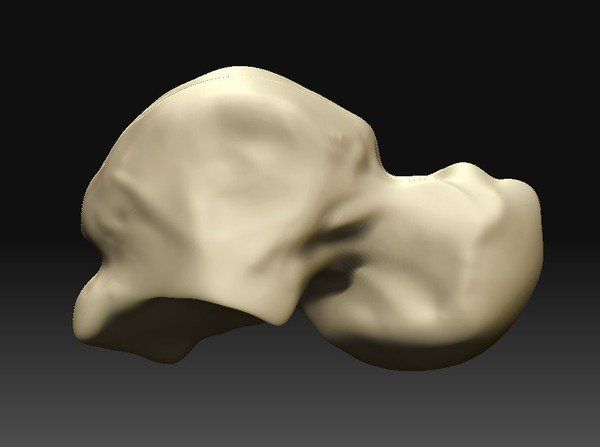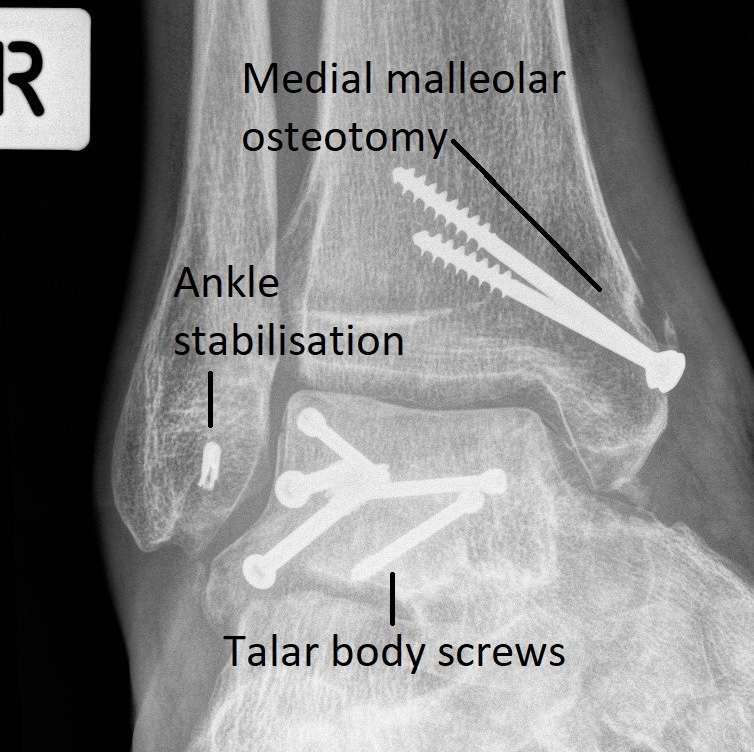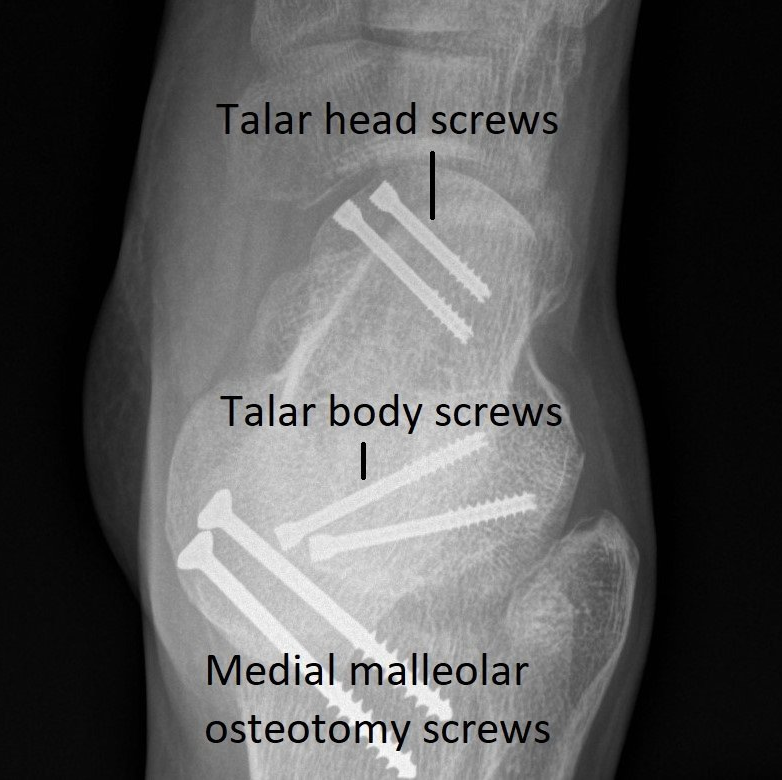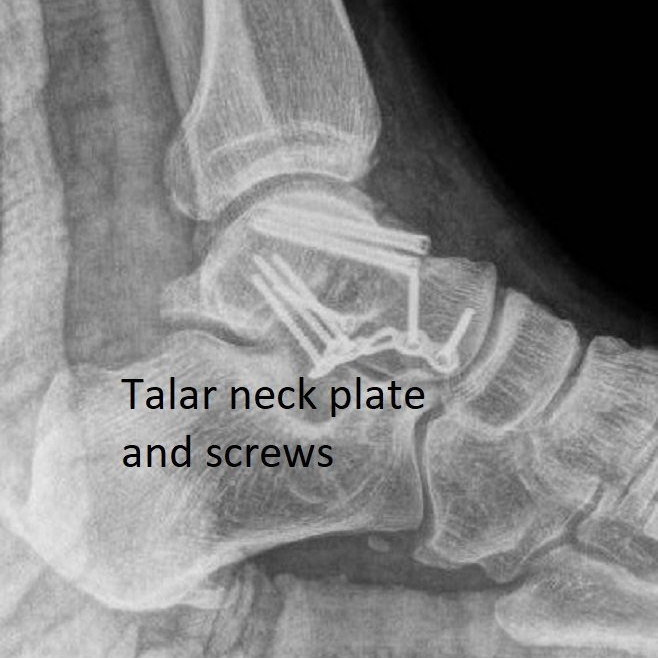Talus Fracture
What is the Talus?
The talus bone is between the ankle and foot. It is mostly covered by joint surfaces and is critical to ankle and hindfoot movement. See Foot - Anatomy and Imaging.
Causes of Talus Fracture
Fractures in the talus occur due to significant falls, motor vehicle accidents or sports injuries.
Symptoms of Talus Fracture
Symptoms include severe ankle pain, inability to walk, swelling and bruising.
These are similar to an ankle fracture and only X-rays or scans can detect the difference.
Diagnosis of Talus Fracture
For all foot injuries sustained in a significant fall or motor vehicle accident, the whole body is assessed for other injuries.
After taking a history and examining the ankle and foot, imaging is performed:
- X-rays (see image)
- CT scan.
These imaging investigations show which part of the talus is broken and how badly. This determines both the need for surgery and the risk of long-term complications. These injuries can lead to severe ankle and hindfoot osteo-arthritis.
Talar fractures can involve the head, neck, body or processes of the talus.
Interesting fact: lateral process of talus fracture is called a "snow-boarder's fracture".
Treatment of Talus Fractures
Talus fractures can be treated by either non-surgical or surgical methods depending on the pattern of fracture.
- Non-surgical Treatment: If the bone has not moved out of alignment, a "moon-boot" and crutches can be used for 8 - 12 weeks. However, even these fractures are sometimes operated on to ensure healing occurs.
- Surgical Treatment: If the fractured bones have shifted out of position, surgery to realign and stabilize the talus with metal screws and/or plates is required. After surgery, people need to use crutches and wear a "moon-boot" for 8 - 12 weeks. Physiotherapy is required to restore movement.
Final healing after these serious injuries takes at least a year. Full recovery of movement may not occur and further surgery is common.


















